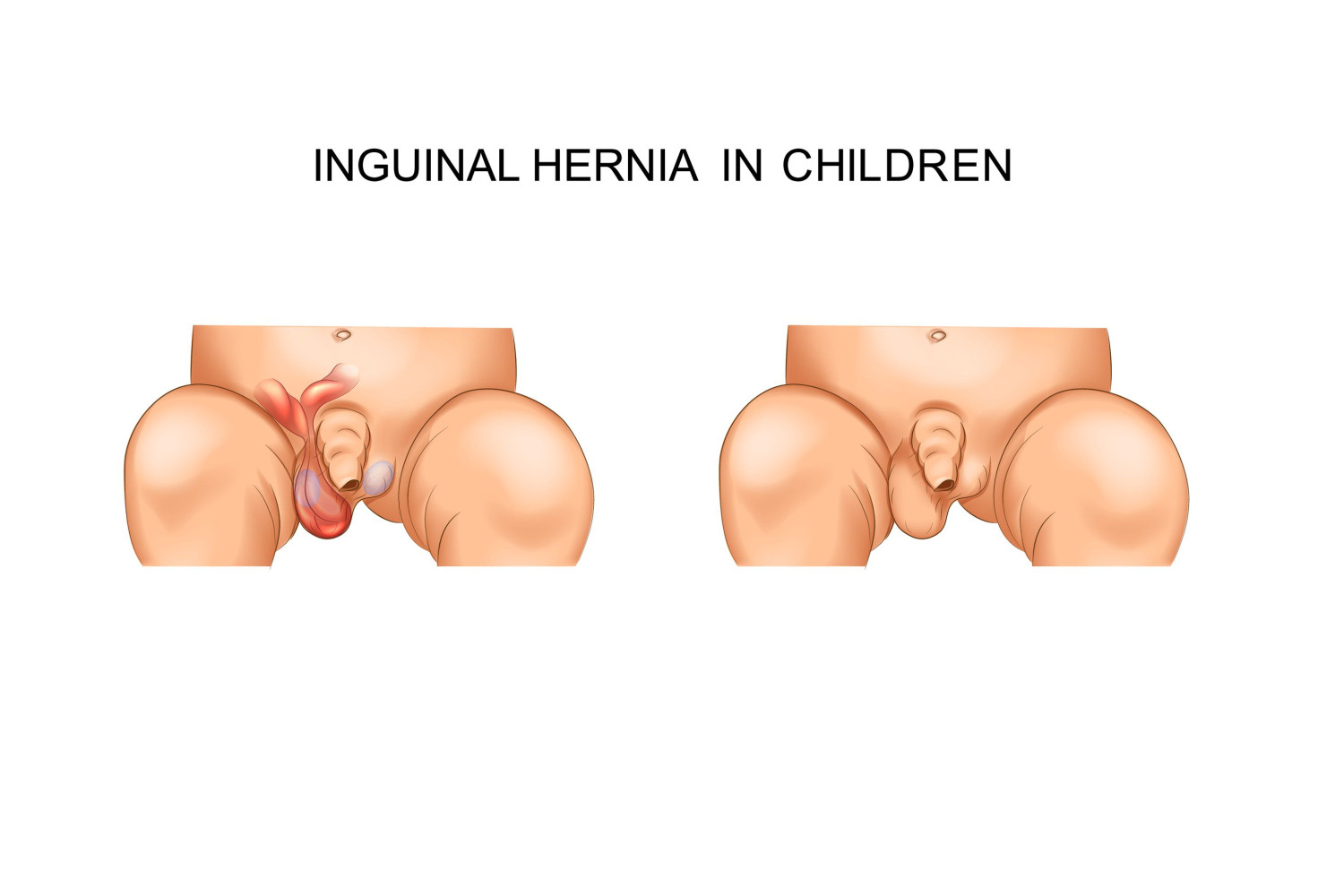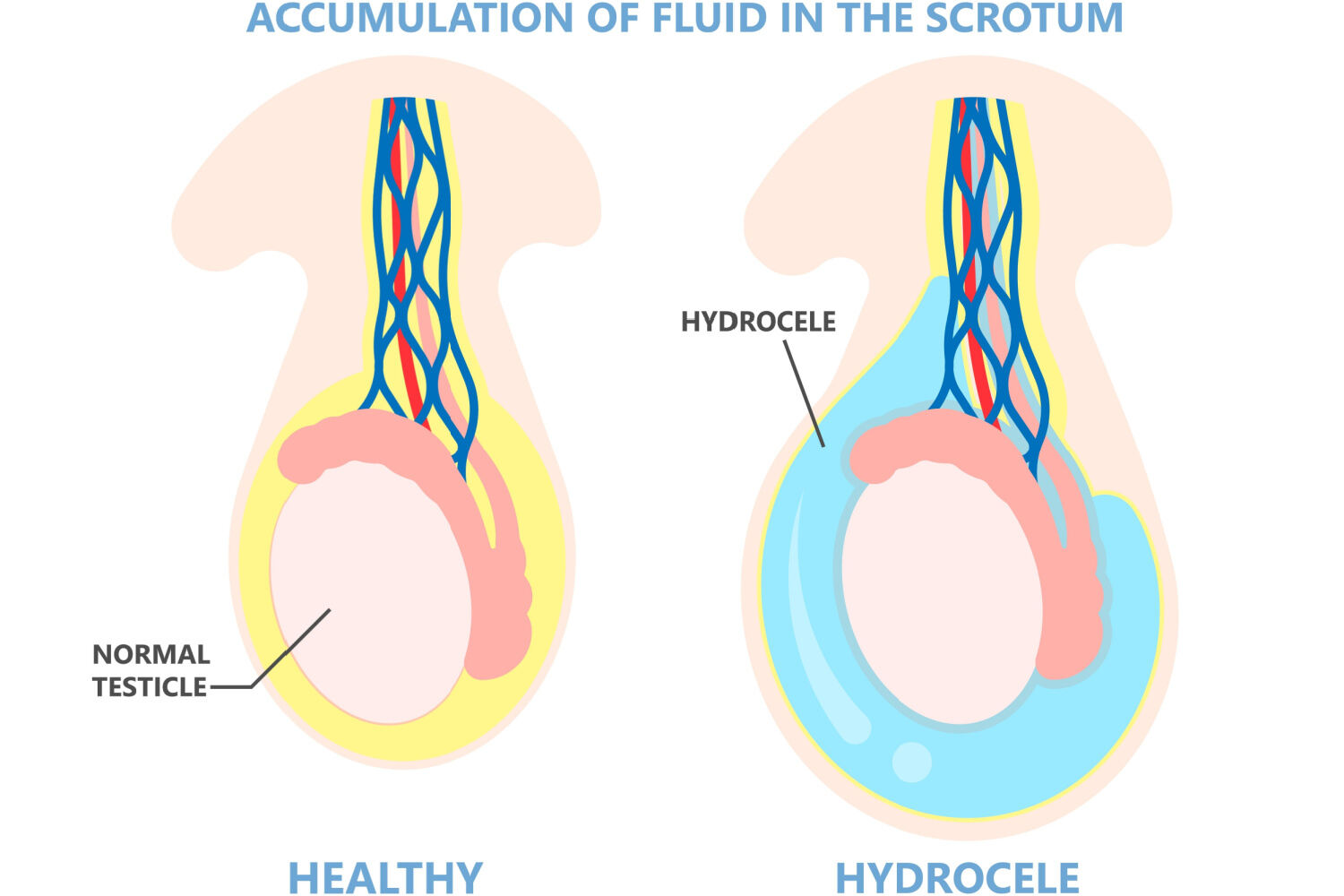
Toddlers face many health issues as they grow up. Their bodies are just developing and will take time to adjust. Everyone talks about a toddler’s recurrent cold and cough, especially if they are in the school-going age. What about other delicate issues? Are you aware of the common genital problems in toddlers?
Genital issues can affect a person at any age. It is a common misconception that such issues surface only after puberty or in old age. Many young children, even newborn babies, suffer from genital issues. If you have a toddler, it is important to be aware of these genital problems, so that you can take the necessary action immediately.
In This Article
Common Genital Problems in Toddlers
Here are five of the most common genital problems that can affect toddlers, the causes behind them, and the possible treatment for the same-
1. Inguinal Hernia
 Inguinal Hernia is when the lower abdominal muscles become weak, resulting in the intestines and peritoneum descending, causing a bulge between the lower abdomen and the thighs.
Inguinal Hernia is when the lower abdominal muscles become weak, resulting in the intestines and peritoneum descending, causing a bulge between the lower abdomen and the thighs.
It occurs more on the right side of the groin, than on the left. In rare cases, it can happen on both sides. Inguinal hernia can affect children under 6 years old – more often the boys than the girls. It is more common among premature babies than full-term babies (1).
Causes
The most common reason for this to happen in toddlers is when the inguinal canal does not close properly before birth. In male babies, the testicles form inside the abdomen and descend into the scrotum before birth. The inguinal canal will close after this descent. If the wall does not close properly, it can result in inguinal hernia. This is why it is more common among baby boys than girls.
Treatment
To prevent this hernia from occurring again, your toddler will undergo a small surgery. The doctor will make a small incision in the skin to push the body parts back into their place and close the opening in the inguinal canal (2).
2. Urinary Tract Infection

Urinary Tract Infection, more commonly known as UTI occurs when some bacteria enter the bladder or the kidneys through the urine. UTIs will cause pain or a burning sensation when urinating. It is more common in premature babies than in mature infants. Among toddlers over one year of age, UTIs are more common in girls than in boys (3).
Causes
Some of the common causes for such UTIs are-
- Wiping the bottom from back to front can transfer bacteria and germs from the gut to the urinary tract
- Letting the toddler sit for long in their soiled nappy gives the bacteria enough time to travel to the urinary tract
- Not urinating when there is an urge
- Not emptying the bladder fully while urinating
- Urine goes back into the ureters and kidney from the bladder after urination.
Treatment
Urinary tract infections are very common and nothing to panic about. The doctor will prescribe a course of antibiotics if the kid is over 3 months old. The UTI symptoms will get better and subside within 24 to 48 hours of starting the antibiotics. The antibiotics will differ according to the type of UTI your kid has.
3. Labial Adhesions
In labial adhesions, the inner lips of the vulva known as the labia minora, stick together and cover the vaginal opening. It is a common condition among young girls and does not have any strong symptoms or cause any harm. It may cause the urine to spray or drip after peeing as urine tends to get stuck behind these adhesions. Parents or the doctor will usually discover this condition when they are cleaning the perineal area.
Causes
The low estrogen levels in young girls can make the labial tissue very fragile and cause it to stick together. Sometimes, diapers or other materials can irritate the labial tissues when they come in contact, and lead to swelling. When the labial tissues swell, they can stick together, leading to labial adhesions (4).
Treatment
Labial adhesions will resolve on their own over time, as the estrogen levels increase in the body. If the adhesions are due to an irritant like diapers, avoiding it can help reduce the inflammation and adhesions.
If the irritation or discomfort is too much for the toddler, the doctor might prescribe a topical corticosteroid or estrogen cream. Letting the toddler sit in a tub of warm water can also help (5).
4. Penile Adhesion
Penile adhesion is a condition in boys, where the skin on the penile shaft attaches to the head of the penis or the glans. These adhesions can occur anywhere around the penis near the head and the severity of these adhesions can vary from toddler to toddler (6).
Penile adhesions are of two types – vascularized adhesions form due to scar tissues. A previous procedure or circumcision can cause scar tissues to form, which can lead to these adhesions. Non-vascularized adhesions form naturally and can recur after a circumcision.
Causes
Some of the causes of penile adhesions in toddler boys are:
- Too much skin remains after a circumcision
- Excess foreskin that does not pull back fully, in uncircumcised boys
- Excess fat in the pubic area can lead to burying of the penis
- Inflammation of the penile skin due to diapers and other irritants
Treatment
Penile adhesions in toddlers may just go away on their own as the penis grows and spontaneous erections occur. In some cases, the doctor might prescribe topical steroid creams to weaken the adhesions. If the adhesions are too strong, the doctor might use a numbing cream and cut open the fused skin (7).
5. Hydrocele

Hydrocele is a common condition among newborn boys, especially when born prematurely. In this condition, the scrotum which holds the testicles will fill with fluid, and swell in size (8a). As boys grow up, some may experience hydrocele during puberty. Hydroceles can be of two types – communicating hydrocele and non-communicating hydrocele.
Causes
In a male fetus, the testicles along with a sac-like lining will descend into the scrotum around the seventh month. This sac should ideally close before birth. If it does not close, it can allow additional fluid to drain into the scrotum, resulting in a hydrocele (8b).
Treatment
If the hydrocele does not shrink on its own, it could be communicating hydrocele – a condition where the fluids from the abdomen drain into the scrotum. If this is the reason for the hydrocele, your doctor will perform a surgical correction to the tube connecting the abdomen to the scrotum.
Genital problems in toddlers – both boys and girls are more common than you think. It is essential to maintain proper hygiene and consult doctors immediately in case of an issue. Ignoring or prolonging your toddler’s discomfort can lead to unnecessary complications.
FAQ’s
1. Can we Prevent Genital Problems in Toddlers?
Maintaining proper hygiene and using non-irritable products can prevent certain genital issues. Issues due to premature birth or incomplete closure of the abdominal wall, are not in your control. You should seek medical treatment for such issues when they surface.
2. Are Male Toddlers More Prone to Genital Problems Than Female Toddlers?
Improper descent of the testicles into the scrotum can cause different issues in young boys. Though young girls do not have this particular problem, they are equally prone to issues arising due to bacteria and other infections.
References
- Inguinal Hernia – [https://www.hopkinsmedicine.org/health/conditions-and-diseases/hernias/inguinal-hernia]
- Inguinal Hernia in Babies – [https://my.clevelandclinic.org/health/diseases/4337-inguinal-hernia-treatment-for-children]
- Urinary Tract Infection in Children – [https://www.ncbi.nlm.nih.gov/pmc/articles/PMC6751349/]
- Labial Adhesions – [https://www.ncbi.nlm.nih.gov/books/NBK470461/]
- Labial Adhesions – [https://www.nationwidechildrens.org/conditions/labial-adhesions]
- Penile adhesion: the hidden complication of circumcision – [https://pubmed.ncbi.nlm.nih.gov/6728346/]
- Penile Adhesions and Skin Bridges – [https://my.clevelandclinic.org/health/diseases/16280-penile-adhesions-and-skin-bridges]
- Hydrocele – [https://www.ncbi.nlm.nih.gov/books/NBK559125/]
